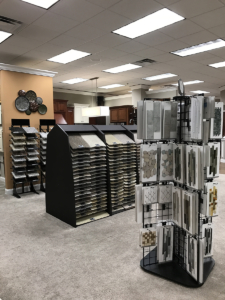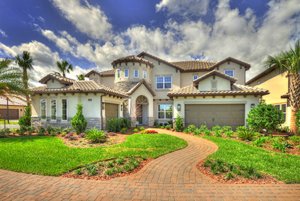So you’re moving to Florida and you’re intent on building a custom home. At ICI Homes, this is what we do. We’re known for our customizable floor plans and creativity, and our customers’ wish lists often are the launching pad for many happy builder-buyer partnerships.
However, since we’ve built custom homes all over the state for more than three decades, our designers and architects are really good at sniffing out potential problems. We’ve cataloged some of  the most universal ones below. Read on to avoid these mistakes when you build your new custom home — with us in Florida, or wherever you are.
the most universal ones below. Read on to avoid these mistakes when you build your new custom home — with us in Florida, or wherever you are.
You don’t know what you want
Indecisiveness can be a real impediment. Some uncertainty is normal when you begin researching a custom-built home; it’s also healthy. Many of you sort of know what you need and like, but won’t decide for sure until you tour numerous model homes and see real-life possibilities. Being open-minded is good. Definitely encouraged.
Indecision isn’t. Not knowing what you want slows down your entire project. It delays your builder’s progress and ultimately, your move-in date. The answer? Ask questions — of designers, builders — even the real estate agents stationed at model homes. Don’t be afraid to say you don’t know if you’ll use a formal dining room. Those professionals will be glad to suggest solutions.
If you’re truly stymied, sit down (ideally with other members of your household) and write a likes and dislikes list of how you use your current home. We absolutely, positively must have another pool. Or, We never go in the living room except during holidays. Or, I hate lugging laundry from the second floor to the washer in the basement. These are important clues to your lifestyle, and can help you make quicker and more confident design choices.
What future? You only plan for now
This can be a giant regret 10 years — or only one— after you move in your new custom home. Because life happens. Our families, careers and interests change in ways we don’t expect. It’s smart to think ahead, as much as possible, about when the kids move out, when retirement looms and whether your job or a spouse’s mandates numerous transfers.
Will aging parents need to live with you? Better think about a ground-floor suite. Plan to travel once you retire? Don’t commit to a huge, high-maintenance home. Neighborhood kids may live at your pool while they’re in school, but will you want that expensive feature and its expensive upkeep once everyone’s off at college? If you’re dreaming about finally having room for a garden, don’t go cheap during the planning stage, then be frustrated at having only a courtyard plot.
Planning ahead — how you use your home now and how that usage could change — helps you avoid…
The empty room syndrome
We realize it’s impossible to plan for everything. If you’ve always wanted an at-home gym, put one in your new house. It can evolve to a guest room or home office if you discover you’d rather patronize a fitness center.
But again, consider practicality and long-term usefulness with every design choice. You don’t want your new back porch being unusable from 3-8 p.m., every day thanks to blistering summer sun. You also don’t want a whirlpool tub that collects laundry rather than providing restorative soaks. Or, a dark interior bathroom that goes unused because of its dungeon-like atmosphere.
Our best advice? Re-purpose the earlier exercise about writing down what you do and don’t like about your current home (remember to involve the entire household). Ask everyone what they think about each area of their future home. If family members are adamant that they won’t use built-in cubbyholes in a mudroom, don’t force them. Steal that space for another function.
Since we’re on a planning kick…
The most crucial traffic areas get the least attention
It’s so easy to do, especially if your new custom home is your dream home or retirement oasis. You want your long-awaited summer kitchen! Your swimming pool and hot tub! Your golf-cart or boat garage! You’re not focused on the hum-drum centers of everyday life.
But you’d best be. Regardless of dream features, you still need a kitchen, garage(s), bedrooms and a laundry room. Those four areas are the most critical for day-to-day living, and often the most overlooked because, well, they’re not as sexy as an infinity pool.
They are more vital, however, so carefully consider where you site them in your new home and how your household uses them. A great time to do this is during brainstorming and planning sessions with your designers and builders. You’ll address every facet of your chosen floor plan, give and receive feedback, and be able to lean on those professionals’ talent and experience.
Here are a few things a custom-home designer might tell you. First, your garage and your kitchen should be close together. No one wants to lug 24-packs of bottled water from one end of the house to the pantry at the opposite end. Second, isolate bedrooms from living areas (as much as possible). No one wants to approach bedtime with a movie soundtrack yowling one wall over.
Third, place your laundry room as close to the sources of dirty laundry as you can. For most of us, that’s bedrooms and bathrooms. Hauling laundry up and down stairs in a two- or three-story home may not bother you. But if it does, consider adding a laundry chute. It’s exactly like a trash chute except it dumps all those washables from upper-floor bedrooms and bathrooms into a container in the first-floor laundry room. Voila!
Don’t go cheap (or overboard) on mechanical systems
Um, don’t. Either way. The laundry-chute option above? That’s a household system that solves a potential problem. Your mechanical systems — particularly the HVAC — must be similar good fits for your specific home, plus do what you ask them to do economically and in energy-efficient and environmentally-friendly ways.
Need an example? If your square footage is on the borderline of manufacturer and builder recommendations for the next-size-up in a heat pump, and the cost difference is $300, you’re likely better off choosing the larger system. It’ll cool your new home more quickly (assuming you follow thermostat setting guides) and shut off when not needed. The smaller system may work overtime for the same comfort, which — you guessed it — will crank your power bill.
You probably guessed this too — the same logic works with choosing a hot water heater, pool pumps, solar power systems, lawn sprinkler systems. And so on.
You forget you live in the sunshine state
Even if you don’t, or aren’t planning to live in Florida, take advantage of natural light and sunshine whenever and wherever you build your new custom home. Unless you require blackout shades for a good night’s sleep or a optimum home-theater viewing, uniformly dark interiors can be depressing over time, and more expensive to brighten.
If you’re Florida-bound or already a resident, embrace the state’s wonderful natural light and mild climate. Take up porch-sitting! Try an outdoor living area or that Florida entertaining staple, the summer kitchen. Inside, choose a floor plan with plenty of windows. Skylights and cathedral ceilings also boost the interior brightness.
Remember, you always can control your new home’s interior light with shades, shutters and draperies. Here’s something else you should control…
Don’t cede decisions to someone else
You and your household will occupy your new custom home. Not neighbors, friends and family quick with their suggestions, nor designers, builders and architects who need your personal input to help you tailor your choices.
The fact someone suggests a glass-tile backsplash for your new kitchen doesn’t mean you must take that suggestion because the word designer follows their name on their business card. Or because it’s your mom making the suggestion. Or, because you truly don’t know what you want.
Did you learn to ride a bicycle? Ace math tests in elementary school? You can acquire the practical knowledge necessary to make smart, informed design decisions about your new custom home. Ask for help! Building industry professionals prefer having happy customers. They help folks like you every day, but you should seek input from a variety of sources.
Building-material and home-decor stores are great for information, as are home and garden magazines and innumerable sites online. Also poll people you know who have built custom homes. What did they like and not like about the process? What did they learn? Get right? Wish they’d done differently? You can avoid costly home-building mistakes!
Ready to accelerate your custom-home-building process? ICI Homes is Florida’s Custom Builder and we’re ready to help. Start the conversation here.








